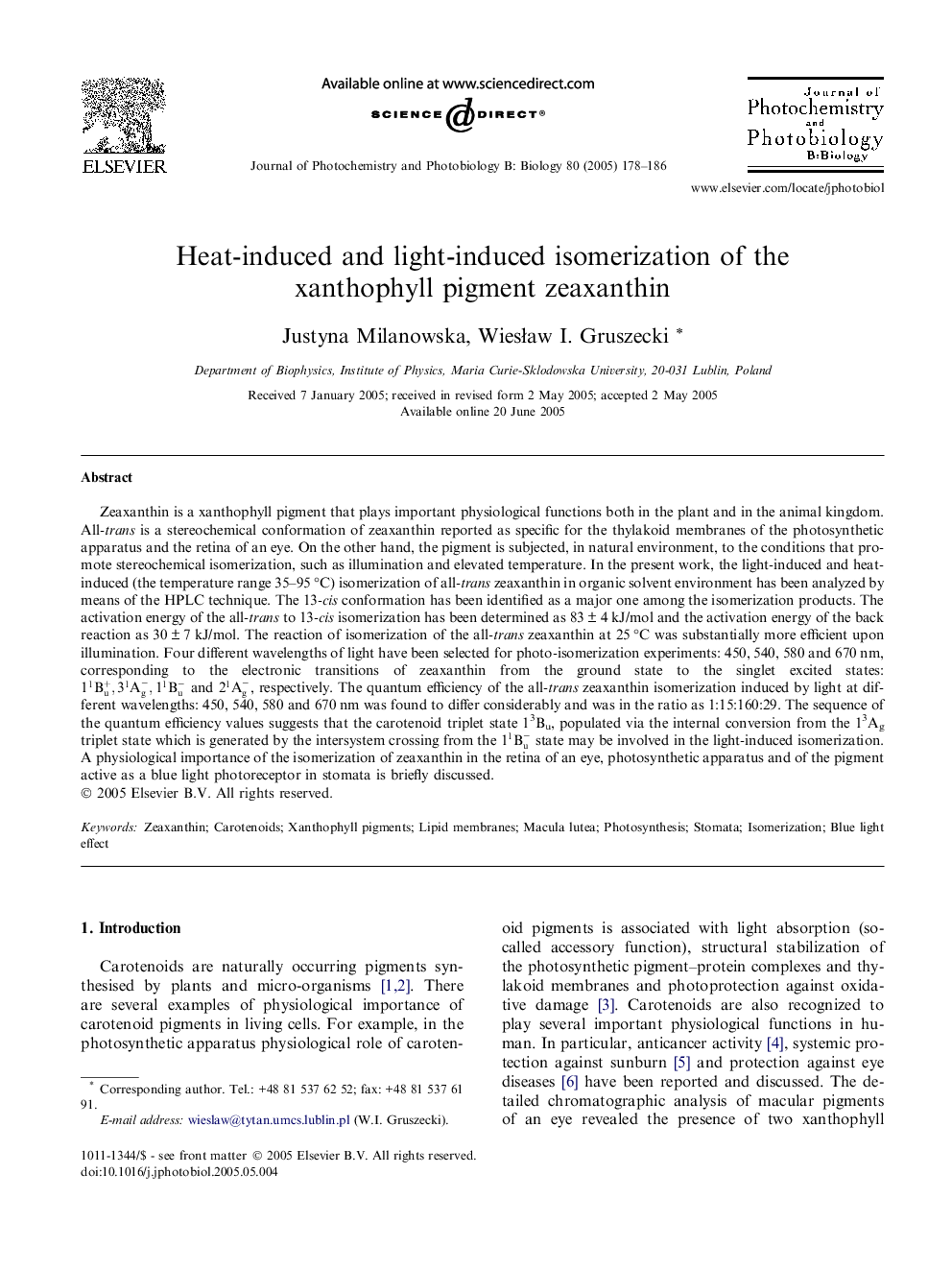| Article ID | Journal | Published Year | Pages | File Type |
|---|---|---|---|---|
| 9607012 | Journal of Photochemistry and Photobiology B: Biology | 2005 | 9 Pages |
Abstract
Zeaxanthin is a xanthophyll pigment that plays important physiological functions both in the plant and in the animal kingdom. All-trans is a stereochemical conformation of zeaxanthin reported as specific for the thylakoid membranes of the photosynthetic apparatus and the retina of an eye. On the other hand, the pigment is subjected, in natural environment, to the conditions that promote stereochemical isomerization, such as illumination and elevated temperature. In the present work, the light-induced and heat-induced (the temperature range 35-95 °C) isomerization of all-trans zeaxanthin in organic solvent environment has been analyzed by means of the HPLC technique. The 13-cis conformation has been identified as a major one among the isomerization products. The activation energy of the all-trans to 13-cis isomerization has been determined as 83 ± 4 kJ/mol and the activation energy of the back reaction as 30 ± 7 kJ/mol. The reaction of isomerization of the all-trans zeaxanthin at 25 °C was substantially more efficient upon illumination. Four different wavelengths of light have been selected for photo-isomerization experiments: 450, 540, 580 and 670 nm, corresponding to the electronic transitions of zeaxanthin from the ground state to the singlet excited states: 11Bu+,31Ag-,11Bu-and21Ag-, respectively. The quantum efficiency of the all-trans zeaxanthin isomerization induced by light at different wavelengths: 450, 540, 580 and 670 nm was found to differ considerably and was in the ratio as 1:15:160:29. The sequence of the quantum efficiency values suggests that the carotenoid triplet state 13Bu, populated via the internal conversion from the 13Ag triplet state which is generated by the intersystem crossing from the 11Bu- state may be involved in the light-induced isomerization. A physiological importance of the isomerization of zeaxanthin in the retina of an eye, photosynthetic apparatus and of the pigment active as a blue light photoreceptor in stomata is briefly discussed.
Keywords
Related Topics
Physical Sciences and Engineering
Chemical Engineering
Bioengineering
Authors
Justyna Milanowska, WiesÅaw I. Gruszecki,
